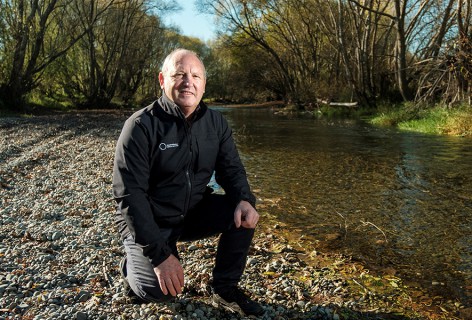- Home
- ...
- Smarter Targeting of Erosion Control (STEC)
- Smarter Targeting of Erosion Control (STEC) News
STEC’s international collaborators: a key part of our implementation pathway
Early in the programme, they collectively carried out an important task by benchmarking a New Zealand review and report on the biophysical performance of erosion and sediment control techniques in New Zealand. Both reports were completed late in 2020.
In this article we introduce our international collaborators and showcase their recent research activities. The situation over the past few years resulting from the global pandemic has severely restricted our face-to-face interactions as well as our mutual involvement in various scientific forums. As New Zealand’s border restrictions ease, and as key scientific meetings re-commence, we hope to soon host them down under before the programme ends in September 2023.
Jean Poesen
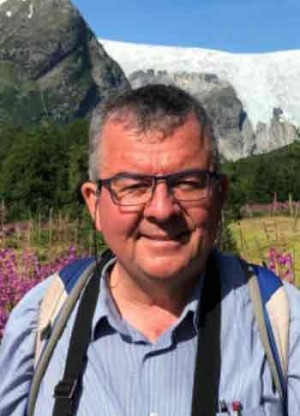
Jean Poesen
Jean Poesen is an emeritus professor at the Department of Earth and Environmental Sciences, KU Leuven (Belgium) and a full professor at the Institute of Earth and Environmental Sciences, Maria Curie-Skłodowska University (Lublin, Poland). His research interests are wide and cover many parts of the globe including throughout Europe, Africa, SE Asia and South America. Soil erosion is often at the heart of many of his studies and of the 900 authored or co-authored papers he has published. His current research focuses on a better understanding of mechanisms and factors controlling land degradation, natural hazards, the impact of humans on landscape evolution in temperate humid, Mediterranean, and tropical environments, as well as on the optimization of soil and water conservation techniques and resilience with respect to natural hazards. Jean’s wide research network helps STEC stay connected to global advances in many fields.
Recent publications:
Borrelli P, Poesen J, Vanmaercke M, Ballabio C, Hervás J, Maerker M, Scarpa S, Panagos P 2022. Monitoring gully erosion in the European Union: A novel approach based on the Land Use/Cover Area frame survey (LUCAS). International Soil and Water Conservation Research 10(1): 17-28.
Boardman J, Poesen J, Evans M 2022. Slopes: soil erosion. In: Burt TP, Goudie AS, Viles HA ed. The History of the Study of Landforms or the Development of Geomorphology. Volume 5: Geomorphology in the Second Half of the Twentieth Century, Geological Society, London, Memoirs, 58.
Zgłobicki W, Poesen J, De Geeter S, Boardman J, Gawrysiak L, Golosov V, Ionita I, Niacsu L, Rodzik J, Stankoviansky M and others 2021. Sunken lanes - Development and functions in landscapes. Earth-Science Reviews 221: 103757.
Massimiliano Schwarz
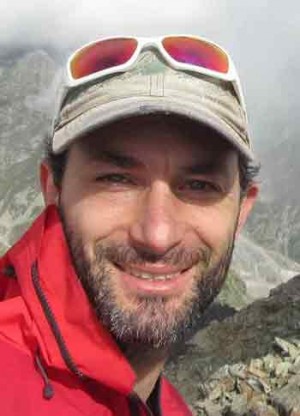
Massimiliano Schwarz
Massimiliano Schwarz is a lecturer at the Bern University of Applied Sciences School of Agricultural, Forest and Food Sciences HAFL. Massi’s research has had a primary focus on tree roots and how trees and forests provide protection against a range of natural hazards. He has supervised several students who have completed PhDs and undergraduate research projects, some of which have been based in New Zealand. He is a founding member of ecorisQ, a global community of professionals who promote sustainable, where possible nature-based, solutions for natural hazard risk reduction. Through this association he has actively promoted translating science into tools for practitioners to enable them to better manage a range of natural hazards. Massi’s focus on developing and implementing practical tools for land and natural hazard management ensures that STEC’s tools are appropriate and fit for purpose.
Recent publications:
Bischetti GB, De Cesare G, Mickovski SB, Rauch HP, Schwarz M, Stangl R 2021. Design and temporal issues in Soil Bioengineering structures for the stabilisation of shallow soil movements. Ecological Engineering 169: 106309.
van Zadelhoff FB, Albaba A, Cohen D, Phillips C, Schaefli B, Dorren LKA, Schwarz M 2021. Introducing SlideforMap; a probabilistic finite slope approach for modelling shallow landslide probability in forested situations. Nat. Hazards Earth Syst. Sci. Discuss. 2021: 1-33.
Freddy Rey
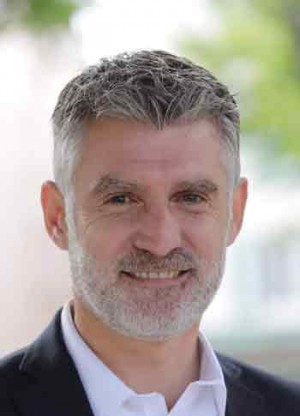
Freddy Rey
Freddy Rey is Director of Research at INRAE’s Mountain Ecosystem and Society Laboratory (LESSEM) in Grenoble, France. His research interests centre around ecological engineering and restoration ecology of degraded lands, and increasingly nature-based solutions. He is also a member of the French Committee of the International Union for the Conservation of Nature (IUCN). Freddy likes to bridge the worlds of science and society and he serves as a councillor for the Auvergne-Rhône-Alpes region, holds the water cycle portfolio for the Voiron inter-communal group of 31 communes and is Mayor of Saint Nicolas de Macherin (30km from Grenoble), dealing with the practical everyday issues of local land and water management. Freddy’s links between the world of science and society also help the STEC programme stay relevant to the global issues we face and the ways we need to weave the differing demands into an integrated management approach to ecosystems, water and land use.
Recent publications:
Kervroëdan L, Armand R, Rey F, Faucon M-P 2021. Trait-based sediment retention and runoff control by herbaceous vegetation in agricultural catchments: A review. Land Degradation & Development 32(3): 1077-1089.
Rey F 2021. Harmonizing erosion control and flood prevention with restoration of biodiversity through ecological engineering used as co-benefits Nature-based solutions. Sustainability, vol.13(20): 11150.
Daniel Hölbling
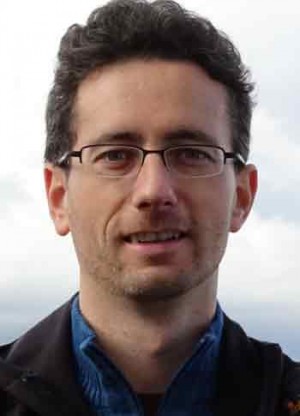
Daniel Hölbling
Daniel Hölbling is Head of the Risk, Hazard & Climate Research Group at the Department of Geoinformatics, University of Salzburg, Austria. He studies natural hazards, in particular landslides, using various remote sensing data (optical satellite/aerial imagery, topographic data and radar data) and their impact on the environment and society. He is interested in assessing the interaction between landscape shaping processes such as landslides, rivers and glaciers in an interdisciplinary manner. A current research project of Daniel’s is aimed at assessing the potential for determining landslide volumes based on digital elevation models (DEMs) derived from Sentinel-1 SAR data. The project aims to analyse the technical challenges related to radar interferometry within mountainous, landslide-prone regions in Austria and Norway. Daniel provides the STEC programme with opportunities and insights into the application of new and cutting-edge technologies and how they can be applied in geomorphology and natural hazard research.
Daniel says: “An important and valuable aspect of my research on landslides is working in different study areas with different characteristics and collaborating with local experts. This international focus allows me to broaden my knowledge and skills but also contributes to personal development. In this sense, the collaboration with colleagues and friends from MWLR within STEC, but also beyond, is a fantastic experience and a great pleasure. New Zealand, with its diverse landscape, is not only a great place to visit but also an ideal and exciting study area for my research on natural hazards. For example, I have been working on the development of a semi-automated mapping method for identifying spatio-temporal landslide hotspots on the North Island using historical and recent aerial photographs, and in another study on detecting and monitoring landslide-dammed lakes on the South Island following the Kaikōura earthquake. I am very much looking forward to continuing to contribute to STEC and any future follow-up research collaboration with New Zealand”.
Recent publications:
Abad L, Hölbling D, Spiekermann R, Prasicek G, Dabiri Z, Argentin A-L 2022. Detecting landslide-dammed lakes on Sentinel-2 imagery and monitoring their spatio-temporal evolution following the Kaikōura earthquake in New Zealand. Science of The Total Environment 820: 153335.
Dias HC, Hölbling D, Grohmann CH 2021. Landslide Susceptibility Mapping in Brazil: A Review. Geosciences 11(10): 425.
Karantanellis E, Marinos V, Vassilakis E, Hölbling D 2021. Evaluation of Machine Learning Algorithms for Object-Based Mapping of Landslide Zones Using UAV Data. Geosciences 11(8): 305. https://doi.org/10.3390/geosciences11080305
